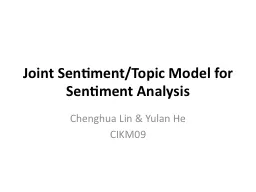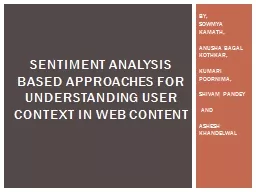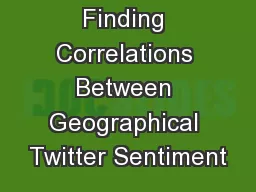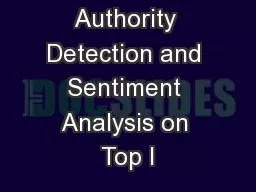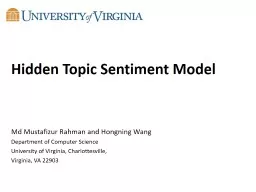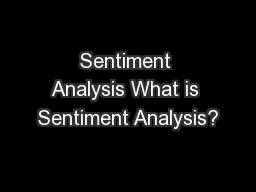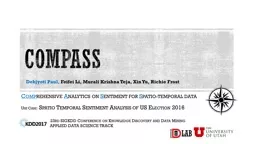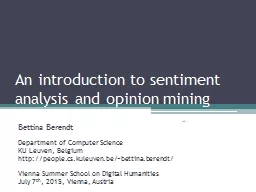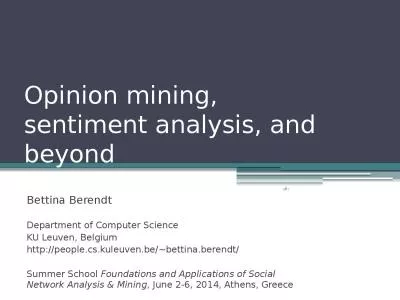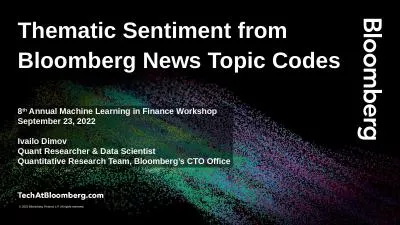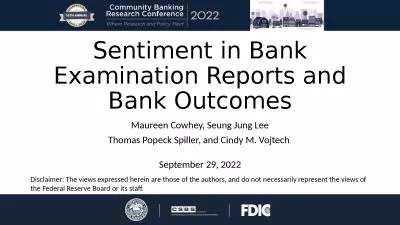PPT-Joint Sentiment/Topic Model for Sentiment Analysis
Author : tatyana-admore | Published Date : 2016-07-10
Chenghua Lin amp Yulan He CIKM09 Main Idea This paper proposes a novel probabilistic modeling framework based on Latent Dirichlet Allocation LDA called joint
Presentation Embed Code
Download Presentation
Download Presentation The PPT/PDF document "Joint Sentiment/Topic Model for Sentimen..." is the property of its rightful owner. Permission is granted to download and print the materials on this website for personal, non-commercial use only, and to display it on your personal computer provided you do not modify the materials and that you retain all copyright notices contained in the materials. By downloading content from our website, you accept the terms of this agreement.
Joint Sentiment/Topic Model for Sentiment Analysis: Transcript
Download Rules Of Document
"Joint Sentiment/Topic Model for Sentiment Analysis"The content belongs to its owner. You may download and print it for personal use, without modification, and keep all copyright notices. By downloading, you agree to these terms.
Related Documents

